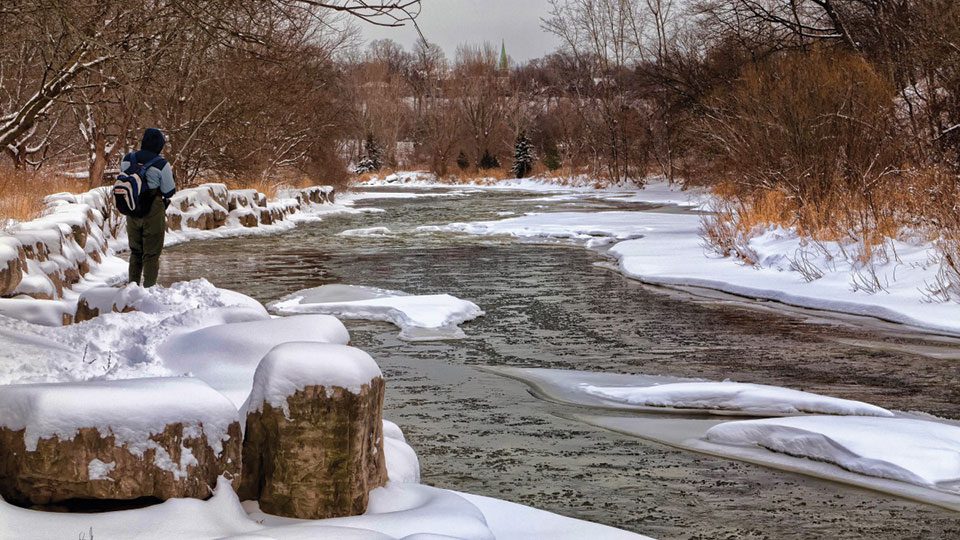It’s deep winter. And while the folks in south Florida may be slamming sailfish, the rest of the country is cold. Those of us who can’t stand to stay inside are sitting in a duck blind, looking down at a hole in the ice or slogging it out trying to catch the few sluggish fish wintertime allows.
Regardless of their slowed metabolisms, fish need to eat. Whether you’re fishing fresh or salt, lake, river, bayou or bay, fish have cold-weather tendencies anglers can exploit. While wintertime might never offer the kind of incredible bites one might find in fall or spring, it is still possible to experience great fishing.
The most important consideration is weather. A warming trend of two or more days often puts fish in the mood to move up and feed. If at all possible, plan trips around these warming trends.
When it’s not possible, seek out warmer water. Rock and metal radiate the sun’s heat into surrounding water. When the sun is shining, areas around rock and metal structure will often be several degrees warmer than the surroundings, which draws in fish and makes them more likely to feed. Warmth should also be a consideration in the time of day you fish. Often, the middle of the day or the early afternoon will provide the best bite of the day because the sun has had time to warm the shallows. It is generally true that fish move deeper when it’s cold, but it is not unusual to find the best feeding activity in the warmer shallows.
The same warm-water theory is a consideration when choosing a destination. Think of the warm-water discharge from power plants in bays or on countless inland reservoirs. Freshwater trout anglers should look to the tailwaters, which maintain a relatively stable water temperature year round. Covering water, finding fish and a feeding pattern are more important to success during the winter months than at any other time of year. If they are available, targeting locations where water conditions remain consistent and predictable is a best bet, even if those conditions are artificially maintained.
Presentation becomes extremely important when fish are sluggish. Regardless of species, fish seek to fill their energy needs while expending the least amount of energy possible. There are differing schools of thought about whether fishing large baits or small baits works better in cold water, and dependent on the species and countless other variables, either tactic could prove effective. One thing is for sure though, from predator to prey, everything alive in the water moves less and becomes less aggressive when it’s cold. Anglers should fish slowly and methodically with the intent of putting the bait directly in front of a fish and leaving it there.
With soft plastics or jigs, this often means using less weight to slow the fall of baits through the strike zone. The best hardbaits will be suspending baits that get into the strike zone and stay there. Even with live or cut baits, anglers should downsize line to reduce its visibility and give a more natural look. When fish aren’t as aggressive, they have more time to examine an offering before they commit.
